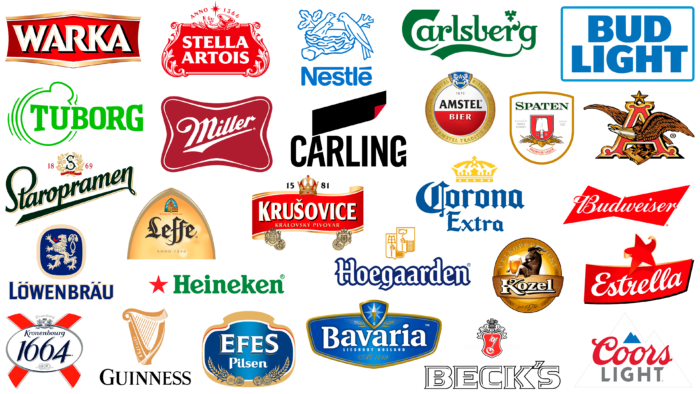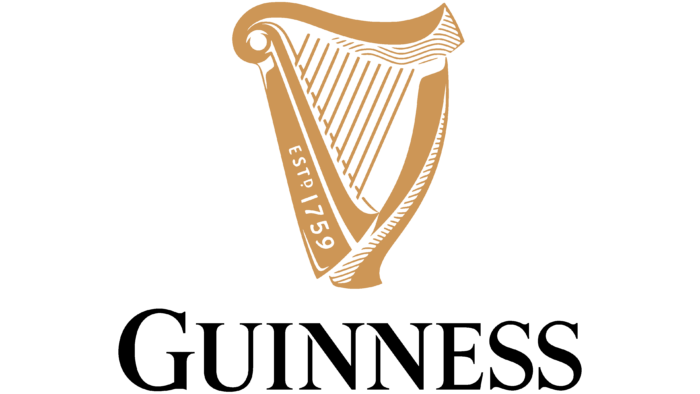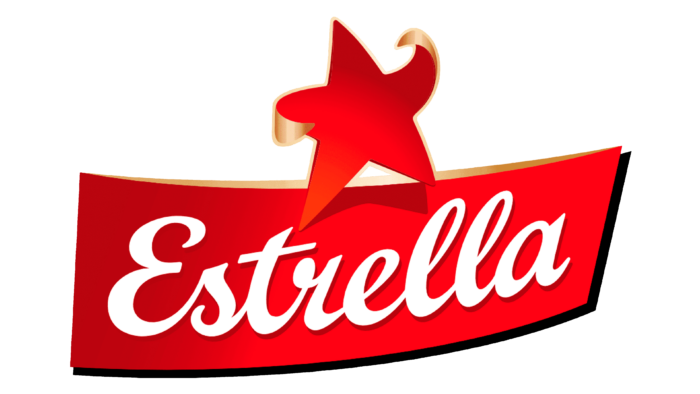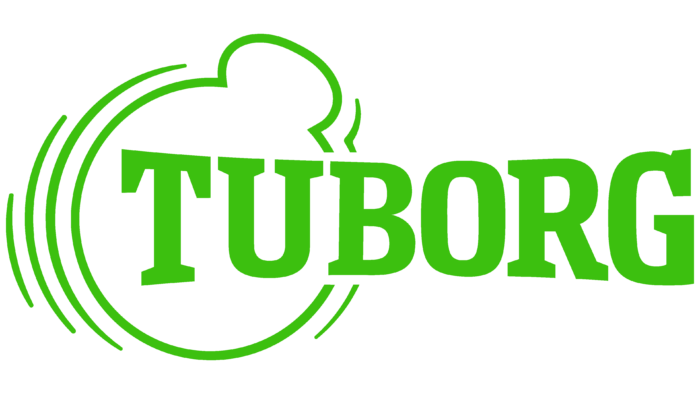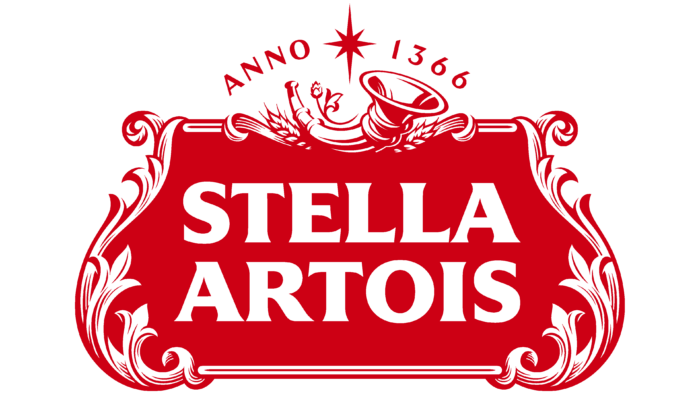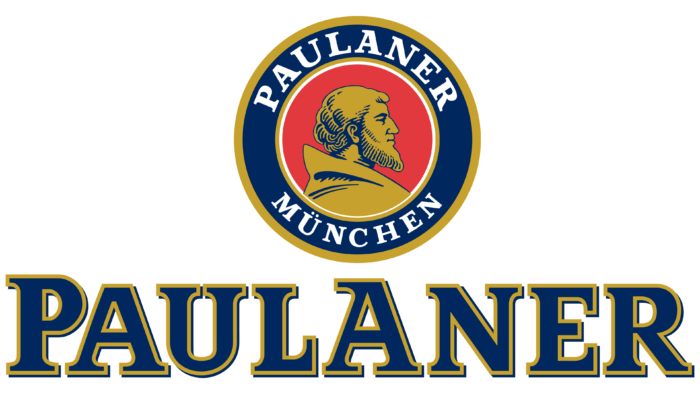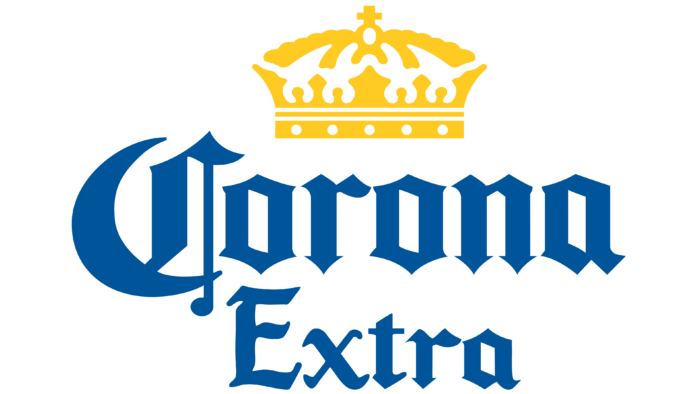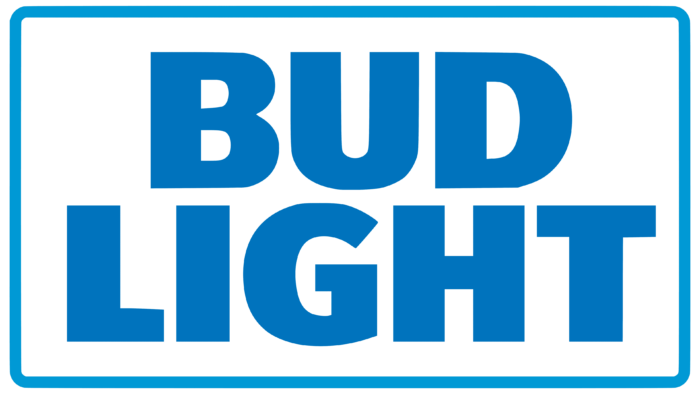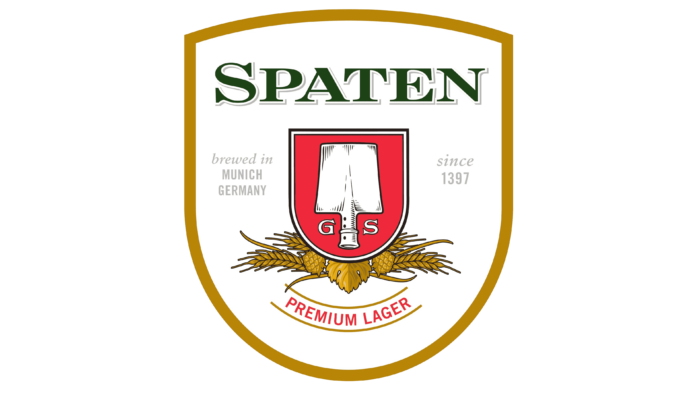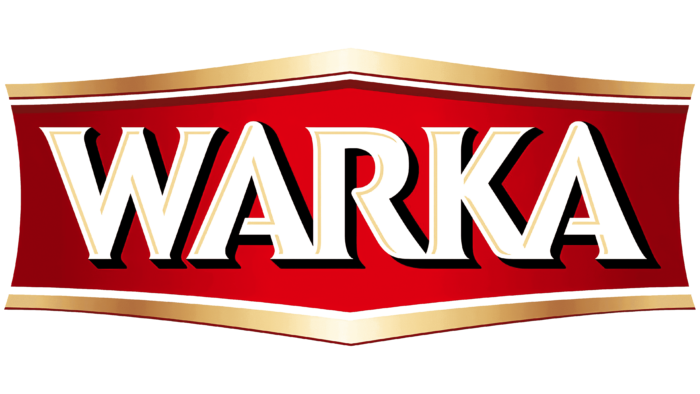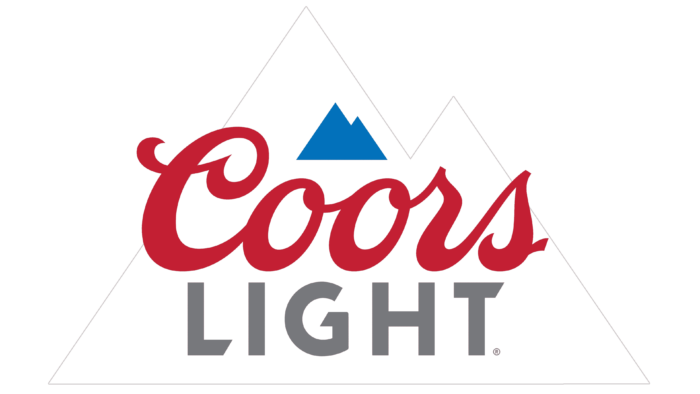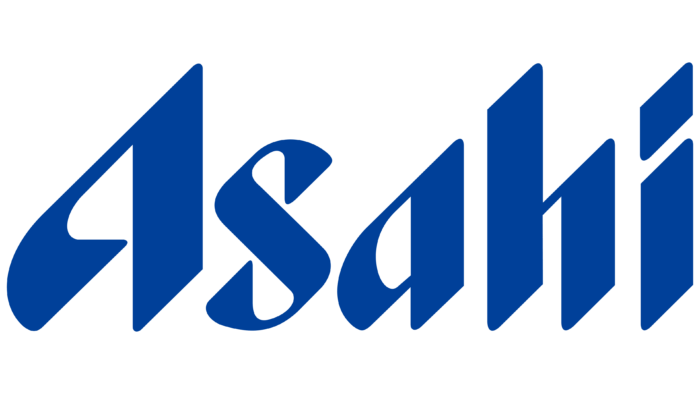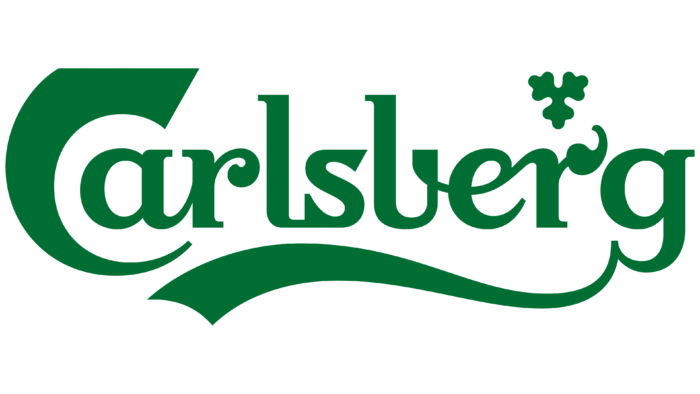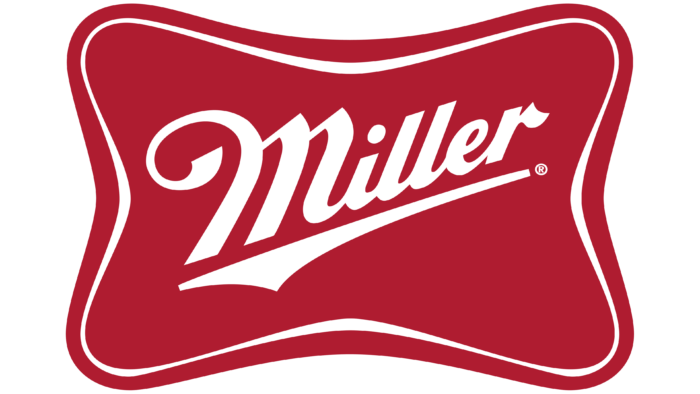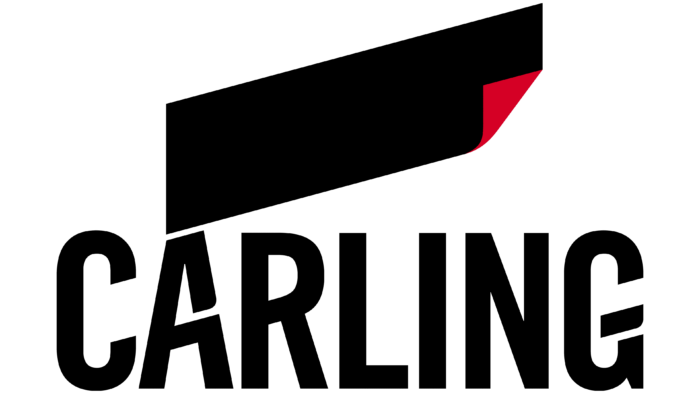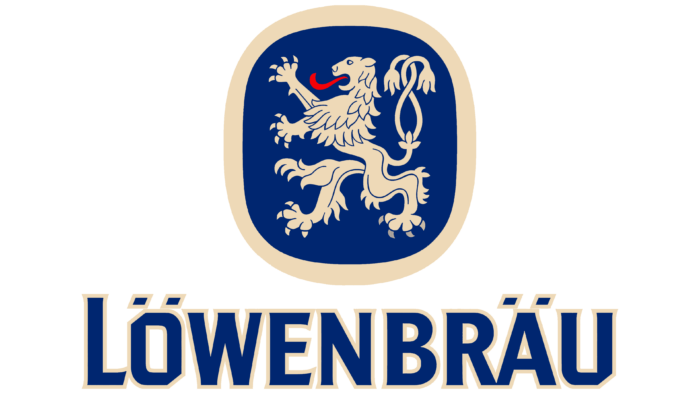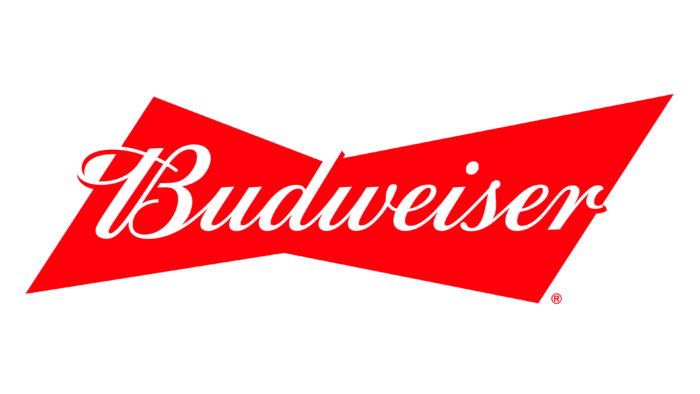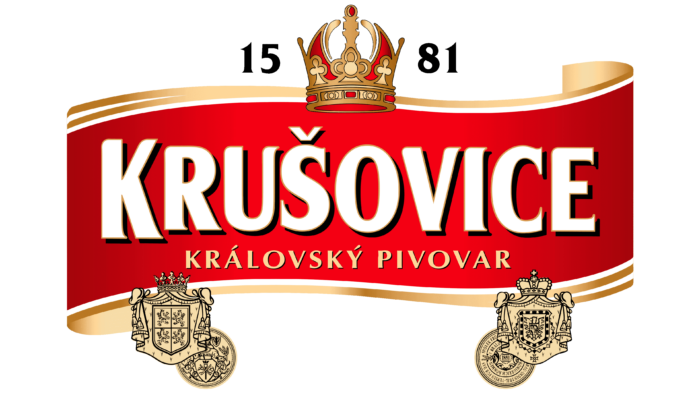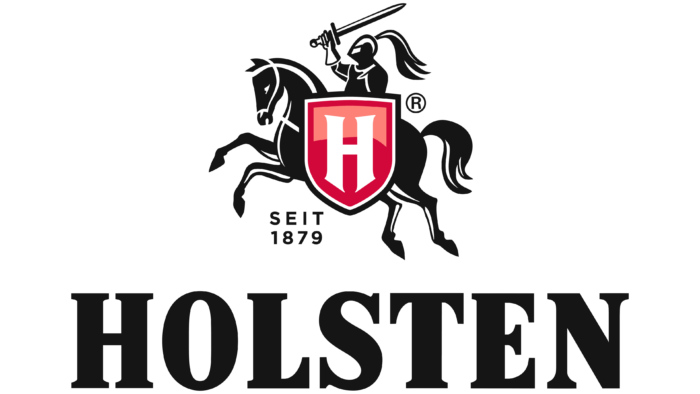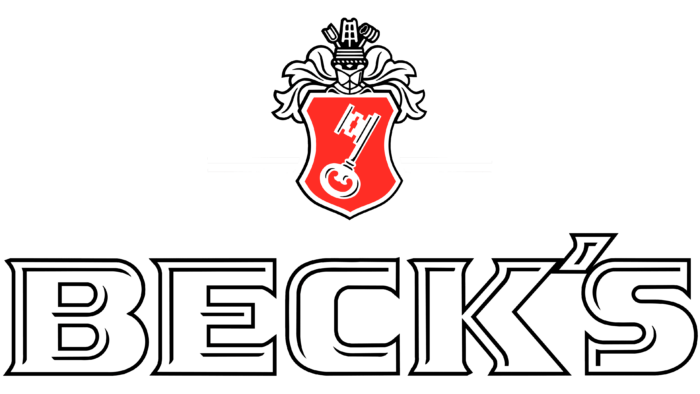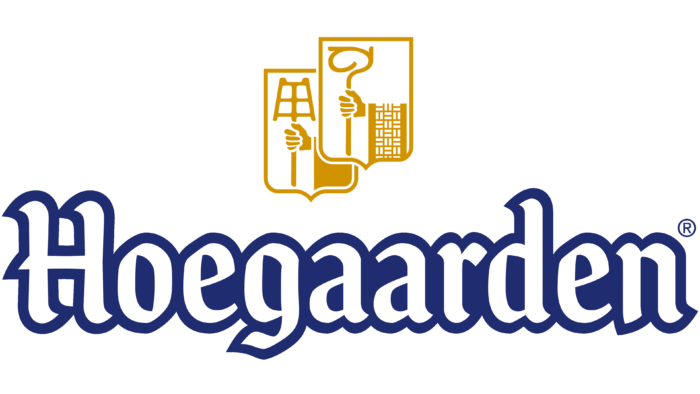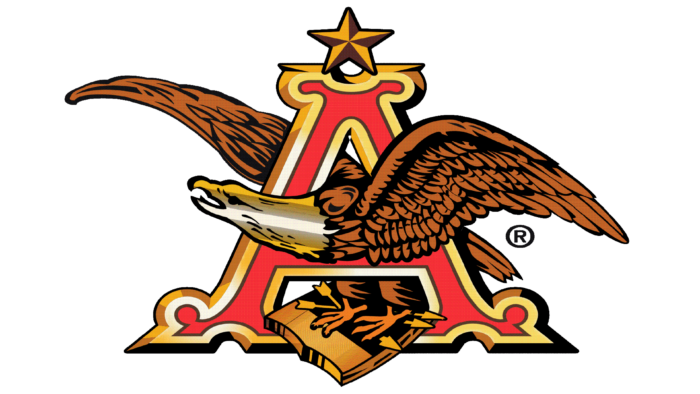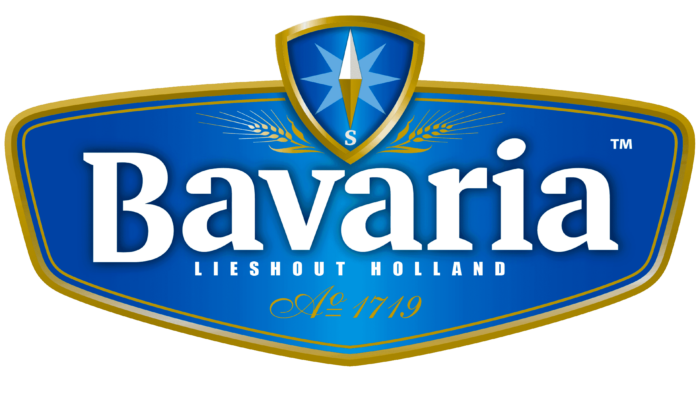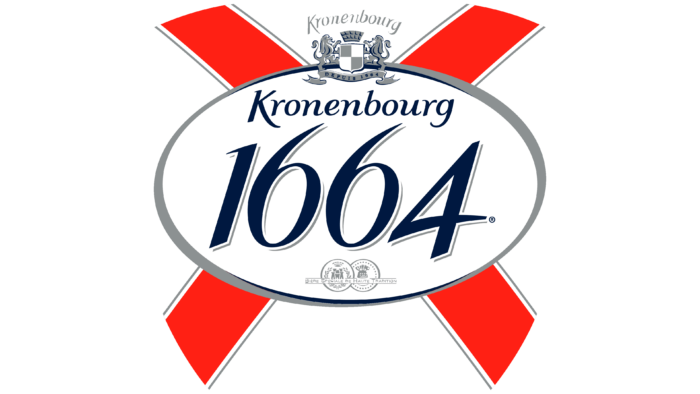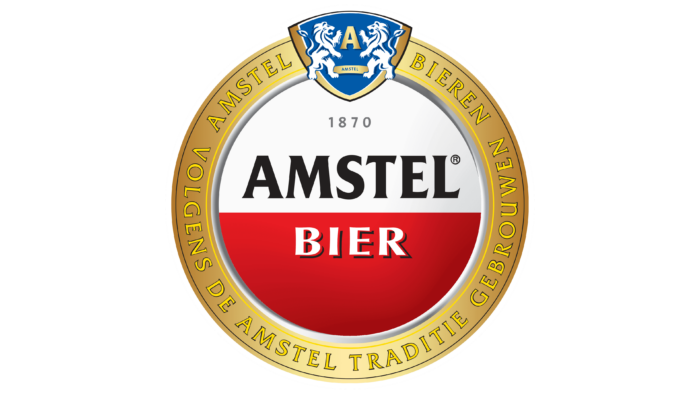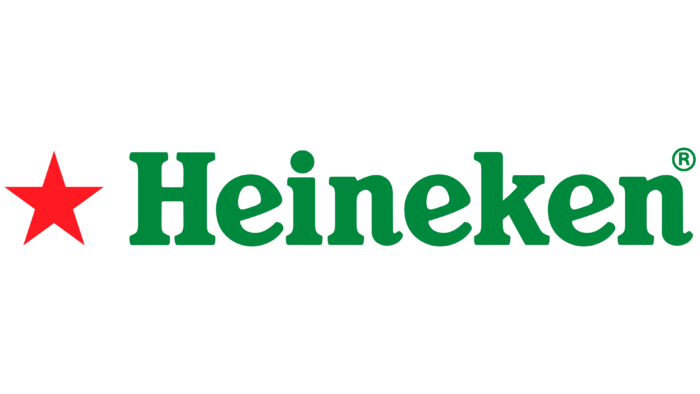There are about 20,000 breweries in the world. This figure is constantly growing, but even today, it seems impressive. But each such company can have up to a hundred brands for different types of foamy beverages. It turns out that it is impossible to determine the exact number of beer brands. At least now, many of them are known only within one country or region. The giants of the alcoholic beverage market are pushing the goods of craft producers off the store shelves, supplying their products to all retail chains.
This begs the question: why have they managed to become so popular? Maybe it’s because of the rich history of their breweries or unique beer recipes. Or maybe success came to them thanks to successful marketing and memorable logos? After all, what can better characterize a brewery than an emblem associated with coolness and freshness? This is exactly the effect created by the cool blue palette. Other producers, on the contrary, use warm golden shades reminiscent of the barley or wheat from which the malt is made. Sometimes, though, bold brands experiment with abstract designs.
Let’s see which variant turned out to be the most winning. Take, for example, the logos of the most famous beer brands, such as Heineken, Bud Light, or Velkopopovicky Kozel. They belong to different companies and are lined up in random order, regardless of market demand.
Guinness
Guinness is the most popular Irish beer, whose history dates back to 1759. But the roots of its modern logo go back to another century – 1862. It was then that the producer released its first bottle with a harp on the label. It was taken from the country’s coat of arms and turned in the opposite direction to distinguish it from an element of the national heraldry. A traditional Irish symbol is associated with Briana Boru’s harp. It is believed that the former King of Ireland loved to play this musical instrument, and the relic was later used by his son as atonement for his sins. On the modern beer brand logo, the harp is represented in gold color, and on one side of the frame, there is a white inscription “ESTD 1759”. At the bottom is the black word “GUINNESS” in Phil Martin’s Agenda URW Light font.
Estrella
Estrella is one of the five most famous Spanish beer brands. Its logo is presented in red and is the embodiment of the name, which translates from a foreign language as “star.” The five-pointed star depicted on the label is slightly deformed: its side tops are bent in different directions, and the lower left corner is unnaturally straightened and elongated, unlike the rest of the parts. This gives the impression that it is cut out of some plastic material. The front side of the star has a red gradient, while the back side is colored in several golden hues. At the bottom is a red quadrangle curving upward. Its outline is outlined in two colors: black and gold. Inside, there is the white word “Estrella” in handwritten script. All elements, including the inscription, look dynamic due to the uneven thickness of the lines.
Velkopopovicky Kozel
The Czech brand Velkopopovicky Kozel is also quite well-known in Europe. It hides a bottom-fermented beer with the funniest label in its segment. Since the word “Kozel” means “goat” in Czech, this farm animal is the centerpiece of the identity. The artists drew every hair and detailed the horns, eyes, ears, mouth, and nose to make the image as realistic as possible. The logo shows only the front part of the goat’s torso, but it can be assumed that it stands on its hind legs to make it more comfortable to hold a large mug of beer. The animal is leaning on a wooden sign that displays the name of the brand. It is written in white letters with a black and gold outline. The background is a golden oval with the inscription “VELKOPOPOVICKY” – the year of the company’s foundation – and two artistically decorated spikelets.
Tuborg
The Danish company Tuborg, which produces beer of the same name, has a recognizable emblem, which became neon-green after the redesign. The color scheme corresponds to the palette of the Carlsberg Group Corporation, as it owns the legendary brewery. The logo consists of two parts: an inscription and an abstract pattern. The name of the manufacturer is made in bold capital font with large serifs. The size of the letters is uneven: they gradually decrease closer to the center and increase at the edges. The design consists of several arc-shaped lines and a large circle passing into a small oval. The central element has the shape of a bottle opener.
Efes
Among Turkish brands, we can distinguish Efes Pilsen, which belongs to the Anadolu Efes holding. This is the case when the logo is made in two symbolic colors: blue and gold. The first one is associated with quenching thirst and the freshness of chilled beer on a hot day. And the second one reminds me of the golden grain from which malt is produced. At the same time, the label of Efes Pilsen features miniature spikelets and hop cones. They are located in the lower part and decorate the images of won medals. Above them is a white inscription: the name of the brand, divided into two lines. The upper word is in capital letters of different sizes: the initials “E” and “S” are enlarged compared to the “F” and “E” between them. For them, a bold font with triangular serifs is used. A customized set of glyphs was developed for the second part of the inscription. The background of the logo is a blue figure of indeterminate shape with a white, red, and gold outline.
Stella Artois
The Belgian brand Stella Artois can be recognized by the red and white emblem consisting of many elements. The basis of the composition is a figurative tablet decorated on the sides with a floral ornament. In the center is written the name of the beer brand, for which the designers created a custom font based on Friz Quadrata, adding triangular serifs to the letters. The phrase is divided into two lines, centered in the center. Above is a hunter’s or shepherd’s horn with two spikelets and a small sprig of hops. Even higher is an eight-pointed star, located between the word “ANNO” and the number “1366”.
Staropramen
Staropramen is another famous Czech beer brand. It belongs to the brewery of the same name and uses its logo – elements created by illustrator František Tichy. Over time, the design has changed, but the essence has remained the same. The main decoration of the label is a golden wreath of a hop branch and a barley ear tied with a red ribbon. The inner space is occupied by a dark green letter “S” with small leaves. The letters “A” and “P” are also written here. Next to the wreath is the year of the company’s foundation: “18” on the left and “69” on the right. At the bottom diagonally is the dark green word “Staropramen,” written in cursive and emphasized by a long stripe coming out of the last “n.”
Paulaner
The Paulaner logo looks like a medallion with a portrait of the founder of the monastic order, whose representatives opened a brewery in Munich. Its roots go back centuries, starting in 1634. Therefore, the first thing that catches the eye when looking at the emblem is the proud profile of a bearded man in a toga with a high collar. The image is made of thin blue strokes and painted in beige-golden color. The background is a red circle taken in rings of white and gold colors. These are followed by a wide dark blue stripe, which shows the company name and location. There is a tight border on the outer side. The inscriptions are made in capital letters in upper case. Another name is located below the graphic icon. This text consists of massive blue glyphs with a golden outline and barely visible shadows, thanks to which the letters seem to float in the air. At the same time, the designers highlighted the central letter “A” by drawing a curve at its top and aligning it in height with the letter “P.”
Corona Extra
Corona Extra is a Mexican brand, the undisputed leader in terms of sales in the light-lager market. Its visual identity is based on the concept of beach mood. The choice of colors is also related to this, as blue and yellow are associated not only with soft drinks and cereals but also with other things, such as the sky and the sun or the sea and sandy beaches. At the top is a yellow crown illustrating the brand name, which is written below in blue letters. The gothic style of the text emphasizes the originality of the beer. It indirectly hints that the brand was named after the crown from the Cathedral of Our Lady of Guadalupe.
Bud Light
The American brand Bud Light introduced a light beer that was previously known as Budweiser Light. Its current logo is very similar to the one used in 1984-1990: it also contains a blue two-level inscription on the background of a white rounded rectangle with a blue border. Only now has the color of the main elements become light to be associated with coolness and freshness, and the border has acquired a clearer outline. The designers kept the bold sans-serif font but reduced its contrast by increasing the thickness of some strokes. This grotesque belongs to the Univers Next family.
Spaten
The Spaten Brewing Company sells alcohol under the brand of the same name, which is particularly popular in its home country of Germany. Since the word “Spaten” translates from German as “shovel,” it is this that is the star of the logo. The fact is that the brewery got its current name in 1622 when malt began to be mixed with shovels. The artists depicted the working part of the tool, turning it upside down with its sharp edges up. Underneath it on both sides are the letters “G” and “S” – the initials of brewer Gabriel Zedlmayr. The central elements are placed in a red coat of arms with a round base. It is inside another shield but already white in color. And on the last one, there is a dark green word “SPATEN,” a red phrase “PREMIUM LAGER,” and light gray inscriptions, “brewed in MUNICH GERMANY” and “since 1397”. A composition of barley spikelets, hop leaves, and cones is also shown. The logo is outlined with a wide gold band.
Warka
Polish beer Warka is in demand in Europe, and outside of it is inferior to other, more popular brands. But its logo is easy to remember, as it contains white lettering with broken gold outlines and black shadows. It’s just one word – the brand’s name, which is in a bold font with triangular serifs. All letters except the first “W” are connected, but the lack of spacing does not impair readability. The background is a red hexagon, complemented by gold stripes at the top and bottom. The gradient makes the image three-dimensional; it seems that the middle of the emblem is slightly convex.
Coors Light
The emblem of the American beer Coors Light is probably one of the most famous on this list. After all, the manufacturer decided not only to depict a mountain landscape but also to make it an indicator of temperature: the drawing on the cans and bottle labels changes color when it gets cold. The composition consists of two connected blue triangles, representing a simplified “2D-model” of the Colorado mountain range. Underneath the polygonal figure is the red word “Coors,” and below it is the gray word “LIGHT.” An elegant cursive font is used for the former, and a customized sans serif with incised horizontal lines for the latter. They are designed by designer Turner Duckworth.
Asahi
Japanese beer brand Asahi chose an oriental logo. Asian motifs are clearly visible in the cursive font with elongated letter tops resembling Arabic hieroglyphs. All the elements in them are diagonal – from the slices at the ends to the crossbars in the intra-letter space. Because of this peculiarity, each detail has a rhombic shape: in some symbols, it is clear; in others – it is remotely similar. At the same time, the thickness of the lines is different, which gives the text an Asian charm, emphasizing the regional affiliation of the company. At the same time, the glyphs are smooth, soft, and even mysterious. They are located on a white background and colored in ultramarine. This also testifies to the beer producer’s desire to stand out against the background of competitors.
Carlsberg
Carlsberg is the flagship brand of the Carlsberg Group, one of Denmark’s best-known breweries. Its iconic logo consists of recognizable letters in dark green. Each letter is unique in its own way: “C” resembles a hook, “l” and “s” merge into one abstract figure, “b” has an unconventional shape, and from the last “g” to the left side stretches a wavy band, which looks like a descending ribbon. Above the letter “r,” there is a small hop leaf, stylized as an Irish trefoil. And overall, the wordmark is Irish-inspired – perhaps because of the widespread cult of beer in Ireland, especially during St. Patrick’s Day celebrations.
Miller Beer
The Miller Brewing Company, an American brewery, has many brands that begin with “Miller.” All of them have different logos. The manufacturer itself uses a dark red mark for its identification in the form of a quadrangular “pillow” with rounded corners and concave sides. A white line is drawn inside with a small indentation from the edge. Its thickness increases in places of deflections and, on the contrary, decreases in protrusions. In the center is the first word of the name of the brewery. It is also white, as this color is best seen against a dark background. The inscription rises up and is emphasized by a speed line in the form of a stylized arrow. To make the emblem dynamic, the designers developed a cursive font with a pronounced right slant and decorated the letter “M” with an elegant swirl.
Carling
Carling premium beer is named after the company that produces it. What’s more, both the lager and the brewery share the same logo: black lettering, complemented by an equally black band with a small red triangle representing a bent corner. The font used to type the word is Carling Regular, created by typographers from the British design studio BrandOpus. The basis for this grotesque was Trade Gothic Bold Condensed. The developers tweaked the glyphs a bit by adding holes in some lines. These holes emphasize the internal dynamics of the letters. As for the polygon at the top, it looks like a diagonal parallelogram with a bent corner. The figure looks stylish and modern; besides, it is not associated with beer at all.
Lowenbrau
The German brand Lowenbrau belongs to one of the oldest brewing companies in the world. Its history (according to the company itself) begins in the 1380s, although all the facts indicate that the company was established somewhat later – in 1524. But on the beer labels, it is 1383 that is indicated. The iconic logo with a heraldic lion turned to the left is also depicted there. It is believed that this image was taken from an ancient fresco decorating the building where beer production began in 1524. In other words, the animal symbolizes the brand’s rich heritage. The lion is drawn in the style of the coat of arms and painted in gold color, but not completely: its tongue is bright red. The base is a dark blue square with rounded corners, placed in a gold frame. And below it is the word “LÖWENBRÄU.” It consists of bold letters with barely visible serifs.
Budweiser
Budweiser’s iconic bow tie logo was redesigned several times before it became minimalist. The symbol of the American beer brand now consists of two dark red triangles connected by sharp ends. The name of the alcohol brand is written across. Especially for this purpose, designer Michael Hagemann developed a special version of the handwritten font based on the existing Brewmaster. The word turned out to be elegant, with harmonious proportions and a slight slant to the right. The lettering uses white color, which makes it look like a part of negative space. At the same time, the outermost letters slightly protrude beyond the “bow tie” and, in these places, acquire a broken red outline.
Krusovice
The list of beer brands with the most famous logos includes another representative of the Czech Republic – Krusovice. This brand belongs to the Dutch corporation Heineken through its parent company, Royal Brewery of Krusovice. Many connoisseurs of Czech beer are well aware of its emblem: a red ribbon decorated with a golden border and complemented by a large crown. Below are the awards that the producer has received. And to the right and left of the crown are the numbers “15” and “81”, which add up to the year of the brewery’s foundation. On the ribbon in large white letters is the word “KRUŠOVICE.” Below it is the phrase “KRÁLOVSKÝ PIVOVAR” in gold color. In the first case, a custom font with sharp serifs was used; in the second case, a sans serif font similar to Vera Humana 95 Bold from BX Fonts was used.
Holsten
This beer brand from Germany strictly adheres to tradition, so it respects the continuity of generations in everything. Existing since 1879, it has come to the conclusion that the best visual image is a traditional one. As a consequence, the Holsten logo is characterized by a classic design. It is characterized by a shield held in the hand by a knight on horseback. On the other side, the warrior has a long, straight sword raised high above his head. The rider is depicted from the side and pointed to the left side. The horse and the knight are drawn with thin white lines and colored black. The shield is red, three-dimensional, and large. This is done so that the letter “H” – the first letter of the brand name – is clearly visible on it. Below is the full name of the company. The inscription is typed in geometric antique font.
Beck’s
Beck’s is one of the few beer brands that use a key in its logo. The thing is that this trademark appeared in Germany in the city of Bremen, whose coat of arms depicts the very tool for opening locks. On the labels of alcoholic beverages, it is placed inside a bright red figurative shield with a double outline: white and black. At the bottom, the word “BECK’S” is written in capital letters. The base of each glyph is white, and the outlines are black. Additional lines drawn in some places create a 3D effect. The font chosen is called Serpentine Sans Serif. It is characterized by short triangular serifs.
Hoegaarden
The symbols on the logo of the Belgian beer Hoegaarden are related to the historical past of the brewery that produces this beer. Two blue rectangular shields with a pointed base contain images of hands holding various attributes. The first shows a staff with a spiral tip, a tribute to the bishops who began brewing beer at the monastery. It is also a sign of the patronage of the Bishopric of Liège. A spatula with holes was once used to stir the wort on the far shield. Both hands with tools are painted in gold and outlined with black outlines. The brand name is written at the bottom in white letters with dark blue lettering. The font is similar to AurelisADFNo2Std-Regular.
Anheuser Busch
Anheuser-Busch is an American company that is part of the Belgian-Brazilian InBev Corporation and owns many international and national beer brands. The colorful and multicomponent logo of the manufacturer contains a large letter “A” of non-standard shape. Its main part is red, and its contours are outlined with different shades of gold, which creates a three-dimensional effect. The ends are decorated with small, rounded protrusions. A bald eagle, standing on a heraldic shield, and three arrows look out of the intra-letter slot. One wing of the bird is also threaded through the hole in the letter “A”; the second wing is on the other side, along with the tail and torso. A five-pointed gold star rises at the top of the letter.
Leffe
The Anheuser-Busch Brewing Company has an international brand called Leffe, which is produced in Belgium. It is a so-called abbey beer – an ale brewed specially and containing a high percentage of alcohol. That’s why its logo used an image of the Notre Dame de Leffe cathedral building in the form of a colorful stained glass window, as the brand’s creators bought the right from the monks to use the history of the Catholic monastery for visual identity. After a redesign in the 2010s, only the Gothic style of the large black lettering “Leffe” and the phrase “Bière Belge d’Abbaye Belgisch Abdijbier” recall the connection to the ancient abbey. In the brand name, the letters are asymmetrical: the second letter, “f,” is slightly smaller than the first, although they share a common horizontal stroke. The text is set against a background of a bright yellow coat of arms.
Bavaria
Bavaria is one of the many brands of Royal Swinkels Family Brewers, formerly known as Bavaria Brewery. Despite being named after a German federal state, the brewery is Dutch. The company’s head office is located in the Netherlands, in the small but picturesque village of Lishout. The Bavaria trademark can be recognized by the logo in the form of a compass, depicted inside a blue triangular shield. At the bottom is the same blue plate with the brand name, which is written in white letters with serifs. The second line contains the phrase “LIESHOUT HOLLAND,” and the third line contains the number “1719”. In addition, two golden spikelets are drawn directly below the shield with the compass.
Kronenbourg 1664
Kronenbourg 1664 is a premium light lager produced in France from local hops. The year 1664 is the year of the foundation of the brewery that produces it. It is reflected not only in the name of the brand but also in its logo, which occupies the central place inside the white oval. Above the dark blue numbers is the cursive word “Kronenbourg” of the same color. Below are two awards received for the high quality of the product. The oval is placed in a silver ring and topped with the image of two heraldic lions holding a shield with a crown overhanging it. This element is borrowed from the coat of arms of the area where the brewery moved in 1850. The background shows two intersecting red ribbons.
Amstel
Amstel is another brand of the Dutch brewing company. Production is moved to Heineken breweries, where several types of beer are brewed. They are united by a logo: a circle placed in a golden frame with the text “AMSTEL BIEREN VOLGENS DE AMSTEL TRADITIE GEBROUWEN.” Inside the circle, divided into two halves (red and white), is written the name of the brand. It is also two-colored: the upper word is black and the lower one is white. Just above it is the year of the brewery’s foundation: 1870. Above it is a blue shield with two heraldic lions holding the letter “A.”
Heineken
The last in this list, but not the last in importance and popularity, is the logo of the Dutch brand Heineken. Here, the name of the beer brand is painted in the color of bottle glass. The inscription is made in the Heineken Serif brand font. Eden designers used Horizon font for its creation. To the left of the word, there is a red five-pointed star – a long-standing symbol of the brewery, which first appeared on the emblem in 1884.
